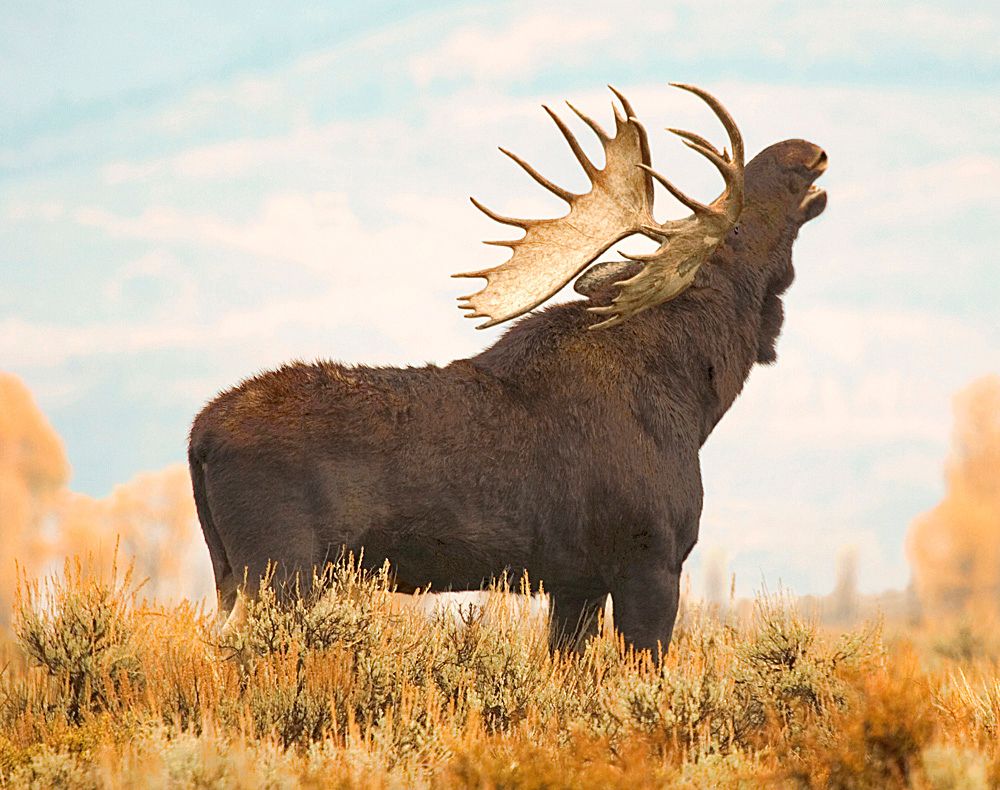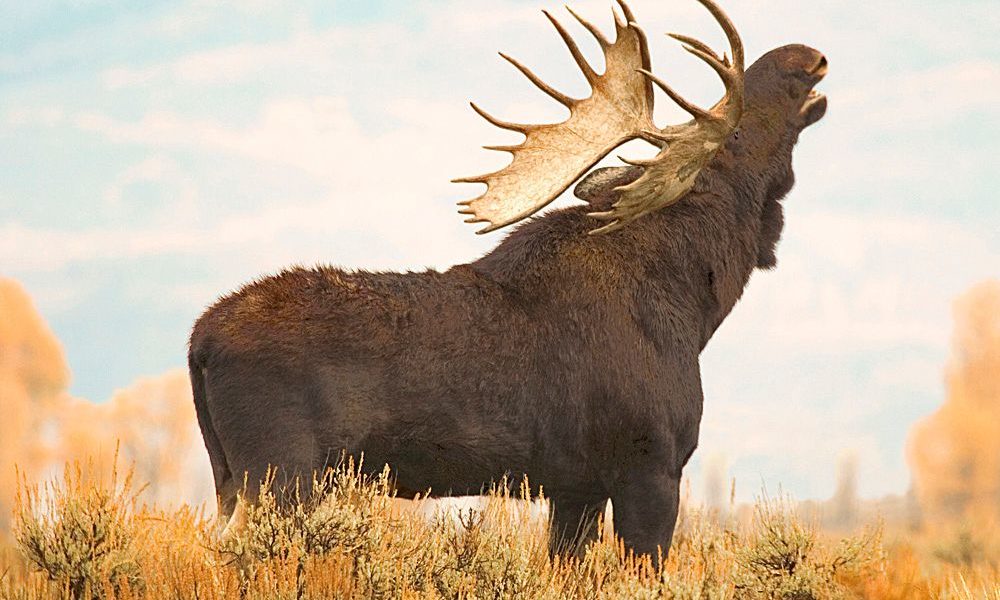
By Leo Wolfson
Cody Enterprise
Via- Wyoming News Exchange
CODY — After years of decline, the regional moose population is starting to show a small comeback in numbers, Game and Fish officials reported recently.
G&F Wildlife Biologist Bart Kroger said in the Worland District, which includes the Meeteetse area, there is a higher prevalence for moose than 10 years ago, with about 25% growth over the last decade.
“Things are looking better for moose in Cody and Meeteetse country,” Kroger said, citing an even cow to calf ratio over the last few years and “lots of calves being born.”
Kroger said moose numbers started to decline about 30 years ago and have remained at lower levels ever since.
In many ways moose are a testament to the fragility of environmental pressures.
Kroger attributed the increased presence of wolves – one of moose’s biggest threats – to part of their decline. But he and Tony Mong, wildlife biologist for the Cody region, said there are a variety of other factors that can lead to their demise — like disease. Kroger said moose populations were already declining before the re-introduction of the wolf to the Yellowstone Ecosystem.
Park County commissioner Lee Livingston said a “trifecta” of the 1988 Yellowstone fires, wolves and grizzly bears — a species he has lobbied for removal from Endangered Species protection for many years — has caused some of the most harm to moose.
“People want to blame a bad neighbor (wolves) but an even worse neighbor moved in (grizzly bears),” he said.
He said the 1988 fires were also detrimental for moose due to the loss of the old growth trees whose moss is a food source for moose.
But a different fire may have led to improved habitat for other moose, as Kroger said the Little Venus Fire that hit the Washakie Wilderness in 2006 spurred willow growth in some of the fire-burned areas. Willow is the most significant part of the moose diet.
G&F is currently running a Meeteetse Moose Project to better analyze this herd, collaring 31 moose in Hunt Area 9 (Greybull-Owl Creek area).
“Getting some good information on those, documenting survival, habitat use, the movements of those collared moose across the landscape,” Kroger said.
Kroger said they have documented more calves and better calf survival in this hunt area. Of the moose that were collared, only three have died: one from vehicle strike, one by malnutrition/predator attack and the other by hunter harvest.
“That’s a pretty good survival rate,” he said.
He said the collared cows have video cameras on their collars that have provided a valuable insight into their daily routines. One moose was spotted spending the entire summer in the area south of Burlington before heading over to the Meeteetse Creek for winter. He has also identified two different sets of moose twins living in the Wood River and Greybull River drainages.
There will be three total moose tags given out in the Greybull-Owl Creek area, five tags for Absaroka (Hunt Area 11) and no tags once again for the Yellowstone Thorofare (Hunt Area 8).
Moose hunting is much more prevalent in the southwestern and southern regions of the state with 39 tags offered in Lincoln County and 47 tags in the Big Piney area outside of National Forest lands.
Kroger said moose hunter success has been running at 100% in his district with the median age of harvested bulls 5-years old.
County Commissioner Joe Tilden, a former hunting guide, said there was a time when 48 moose tags were given out in Hunt Area 8, a location he said was considered at one time one of the strongest moose areas in the state. Tilden said G&F started cutting these tags in half until eventually there were none.
Mong said moose populations are “slightly increasing” in the North Fork area as well. He said the species has benefited from increased management of wolves over the past five years.
The most significant change Game and Fish is proposing for moose hunting statewide this year is to increase tags in southern Wyoming and offer a limited number of antlerless moose licenses for Moose Hunt Area 26 in Lincoln County, in response to chronic moose damage reported on multiple ranches.
Proposed moose archery seasons this year will run from Sept. 1 to mid-late September, while most regular moose seasons will run from Oct. 1-Oct. 31 with a few exceptions.





